As the earliest trading outpost of Britain’s far-flung empire in the Far East, Penang has always maintained a tenacious link to its illustrious past — its labyrinthian streets are a veritable treasure trove of fascinating centuries-old buildings. Treading down the streets of George Town, Penang’s atmospheric capital, is like journeying through a microcosm of exotic Asia: exuberant streets teeming with people of all colours and creeds, rows upon rows of centuries-old Chinese shophouses, interspersed with onion-domed Muslim mosques with soaring minarets, colourful Chinese and Hindu temples, graceful churches, and ornate Chinese clan-houses that exude history and grandeur.
Penang is a feast for the senses. Here is a list of what to do — and how to maximise one’s enjoyment as a history lover — on a visit to this exciting destination.
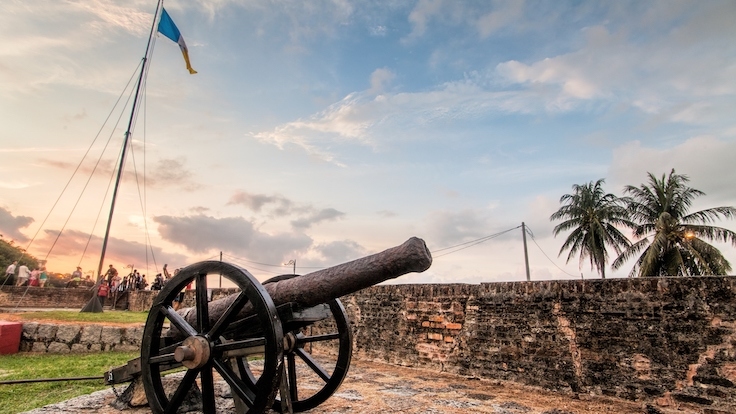
PLAY
Arts & Culture
Spend some time exploring the streets of George Town, which has the largest collection of pre-war buildings in Southeast Asia, many of which date back to the late 19th century and early 20th century. The contiguous rows of shophouses are built according to an East-meets-West Straits-Eclectic architectural-style, characterised by elaborate plaster renderings, use of decorative tiles, and ceramic artwork.
Make a beeline for Fort Cornwallis — its stone ramparts, bristling with cannons, still dominate the Old Esplanade. First built in 1786 to guard the then-fledgling British colony from pirates and hostile external forces, the fort was named after Charles Cornwallis, 1st Marquess Cornwallis, who was the Governor-General and commander-in-chief of British India at the time. The largest of the fort’s 18 cannons is the Seri Rambai — cast in 1603, the bronze cannon became revered by locals as a symbol of fertility.
A bronze statue of Captain Francis Light, the founder of Penang as a British colony, can also be seen at the fort. It was sculpted in 1936 by F.J. Wilcoxson based upon the likeness of Colonel William Light, the son of Captain Francis Light and the founder of Adelaide, Australia.

Another place to visit is the Sun Yat Sen Museum, located in a well-preserved 19th-century Straits-Eclectic Chinese shophouse. This was the former base of Dr. Sun Yat-sen, the man responsible for bringing an end to 4,000 years of dynastic, imperial rule in China. Established in 1910, when Dr. Sun moved the Southeast Asian headquarters of his Tongmenghui party to Penang, much of his anti-Qing revolutionary activities were planned here.

George Town’s Street of Harmony — Jalan Masjid Kapitan Kling — is also worth a stroll. Here, one can take in the beautiful St. George's Church (built 1819), the oldest purpose-built Anglican church in Southeast Asia. Next to it is the Kuan Yin Teng Temple or the Goddess of Mercy Temple — built in 1728, making it the oldest and most venerated Chinese temple in Penang.
Here's a fun fact: Albert Einstein visited it in 1923, and he commented that the colourful paintings adorning the walls were “mysteriously terrifying”. He was obviously referring to the scowling images of the “Four Heavenly Kings”, which one can still see today.

Adjacent to this temple is the first Hindu temple in the state, the Arulmigu Sri Mahamariamman Temple (built 1833) — its striking gopuram filled with effigies of Hindu gods, goddesses, and mythical creatures. Nearby is the stately Kapitan Keling Mosque, established in the early-1800s, and named after Cauder Mohuddeen Merican, leader of the Indian-Muslims in Penang at the time. In 1801, the Lieutenant Governor of Penang, Sir George Leith, had appointed him as the Captain of the South Indian or “Keling” community in Penang.

Nature
Avid hikers will find trails aplenty. Despite its rapid urbanisation, much of Penang is still covered by vast expanses of primary rainforest, with a rich biodiversity of flora and fauna. The 1,213-hectare Penang National Park alone lists 417 flora and 143 fauna species.
Penang Hill is the highest point in the state at 833 meters (2,732 ft) above sea level, and its lofty peak is home to many grand-looking bungalows, a few dating back as far back as the late-18th-century. Some, like Eythrope and Hickory, now welcome paying guests to stay, whilst Edgecliff (built 1937) now houses a small but well-appointed gallery-museum.
EAT
Good eating places can be found wherever one happens to be in Penang. These are some dining gems that are guaranteed to satisfy even the fussiest of palates.
Bridge Street Prawn Noodle
Bib GourmandMICHELIN Guide to Kuala Lumpur & Penang 2024
The Hokkiens are the first Chinese in Penang, and they bring along with them their favourite noodle dish: prawn noodles, known in Penang as Hokkien Mee.
Bridge Street Prawn Noodle is currently run by the third-generation of the Lau family, which started the business six decades back. The all-important pork-shrimp broth here is light and flavoursome, with a gentle stab of heat from the chilli paste stirred into the soup stock. An order of Hokkien mee would consist of a mixture of yellow Hokkien wheat noodles and rice vermicelli (called ”bee hoon”), garnished with tender, juicy pork ribs, pork meatballs, pig’s intestines, slices of fishcakes, hard-boiled egg, and bouncy-fresh shrimps, all steeped with the hot piquant broth.
Sister Yao’s Char Koay Kak
Bib GourmandMICHELIN Guide Kuala Lumpur & Penang 2024
Char koay kak is a popular street food originating from Teochew and Swatow cities, the homeland of the Teochew people, in Guangdong, China. The Teochews are one of the largest ethnic Chinese groups to emigrate to Southeast Asia, including Penang.
This very popular stall is operated by the three friendly Yao sisters who carry on the business started by their father in 1963. Koay kak is a form of steamed rice pudding with the consistency of firm polenta. Cut into small square batons, then pan-fried in pork lard, preserved chopped radish, eggs, garlic, scallions, and beansprouts, the wok-seared ingredients will then be seasoned with a “secret” blend of light and dark soy sauces, fish sauce, and other condiments.
Teksen
Bib GourmandMICHELIN GuideKuala Lumpur & Penang 2024
Perhaps the most popular eatery in town today, Teksen started off in 1965 as a tiny, tin-roofed shack serving Teochew rice porridge with simple side dishes, catering to menial labourers and trishaw riders. Eponymously named after its founder, Choo Teik Seng, the eatery has since morphed into a busy family restaurant with perpetual queues of eager diners, both local and foreign, wanting to get a taste of its famous dishes.
Nowadays, its offerings run the plethora from Teochew and Cantonese staples, to popular Penang-Nyonya dishes — all freshly cooked and positively bursting with flavours. Don’t miss its signature double-cooked roasted pork with chilli padi, and the stingray gulai tumis — perhaps the best renditions in town!
Ali Nasi Lemak Daun Pisang
SelectedMICHELIN Guide Kuala Lumpur & Penang 2024
This popular nasi lemak kiosk was founded in 2004 by Mansor bin Musa, a former factory worker turned nasi lemak chef. Known as “Ali”, a nickname given by his childhood friends in his home village, his nasi lemak is fragrant with coconut milk and pandan.
Choice of garnishes include fried fish, hard-boiled egg, crisp anchovies, chilli shrimps, chilli squid, and curried chicken. Each serving will come with Ali’s famously incendiary, tongue-numbing sambal sauce, poured liberally over the mound of steaming-hot nasi lemak, then enfolded in a green banana leaf (“daun pisang” in Malay) wrapper.

STAY
After a day of exploration and gourmet-hunting in George Town, nothing is more welcoming than to retire in the luxurious comfort of the Shangri-La Rasa Sayang Resort and Spa, strategically located away from the hustle and bustle of the city and along the palm-fringed beaches of Batu Ferringhi.
Shangri-La Rasa Sayang Resort is the premier choice to stay on the Batu Ferringhi stretch, with its spacious rooms, beautifully landscaped pools, and lush gardens stretching out to the sandy-white beaches. One can also relax with a massage or aromatherapy treatment at the well-appointed spa.
Batu Ferringhi, translated as “The Rock of the Foreigner” was so-called as, for centuries, it was a stopping point for Portuguese ships en route from Goa to Malacca and Macau, in order to replenish their fresh water supplies. The sight of Portuguese carracks berthed on the rocky outcrops gave the place its name.
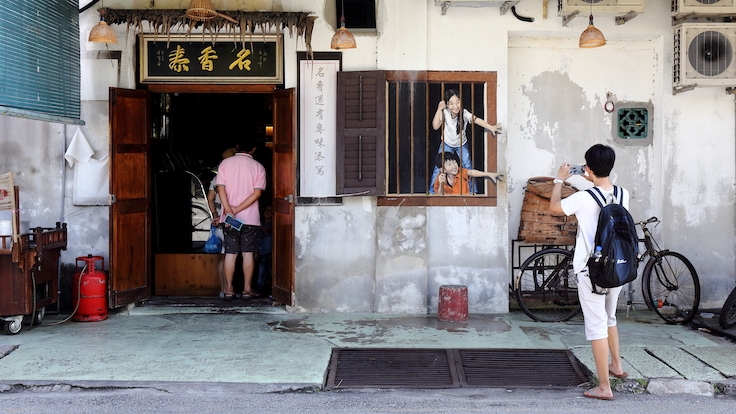
Throughout its history, Penang has always been a place for adventure: from being a pirates’ cove before the arrival of the British East India Company in 1786, to its pre-eminent position as a key British trading post and stopover point between British-ruled India and China in the 19th century. Penang also played a pivotal role in the Opium War as a transit point for the commodity from opium plantations in India en route to its Chinese market.
Today, an adventure holiday in Penang more likely refers to treading the heritage trails, where vestiges from the past are still remarkably well-preserved. The sun may have set on the British empire, but here in Penang, you have a sense that its epilogue is still being written, and it promises to be exhilarating.






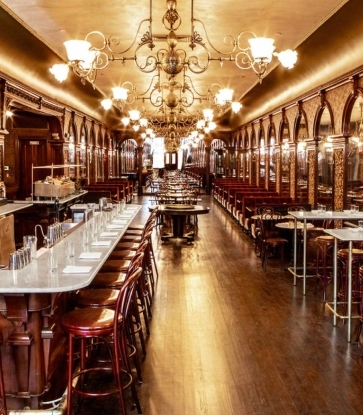
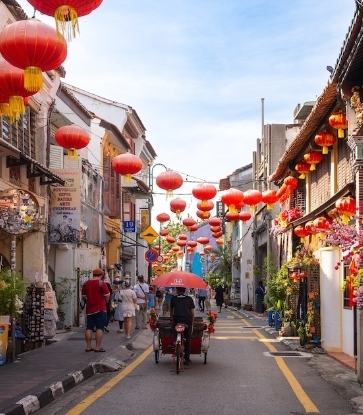

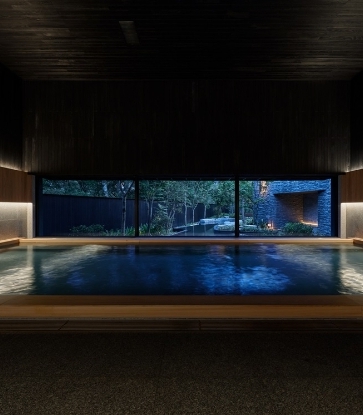
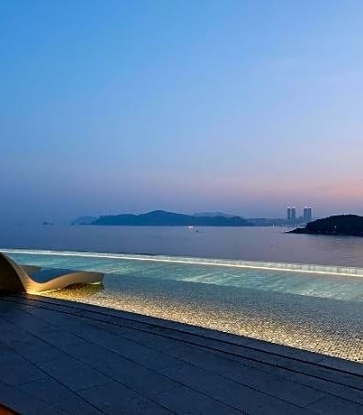

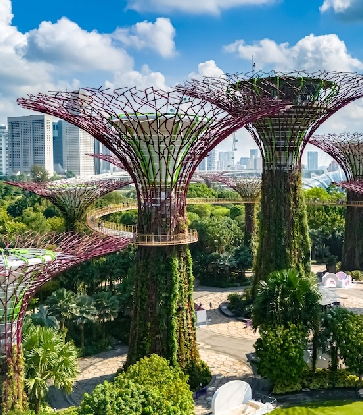
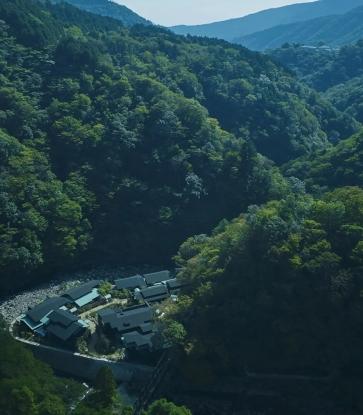


.jpg)


